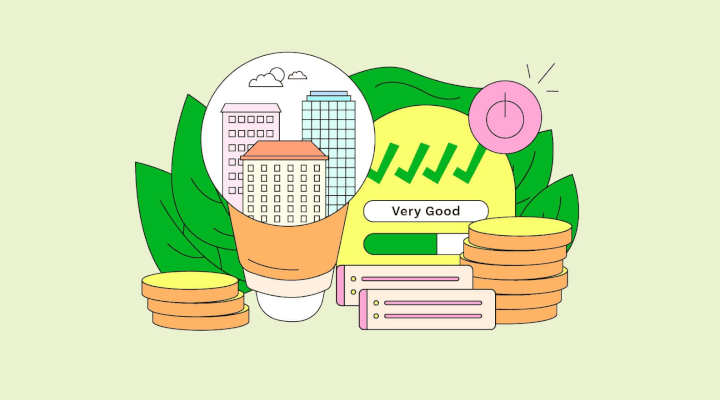How To Save On Your Electricity Bill

Your daily actions may be contributing to your electricity bill more than you think. As electricity prices increase, here are some tips to adopt that can make a big impact on your savings.
Keeping Cool
With air-conditioners, cooler is not always better. In fact, the cooler the temperature setting, the more energy used by your air-conditioner.
Set the temperature of your air-con at no lower than 25˚C. According to the National Environment Agency (NEA), every degree above 25˚C can save about 2% on your bill, while every degree below costs an extra 6%. For every degree raised, you can also save about $13 a year.
Using a fan instead of an air-conditioner can even save you up to $384 a year. So use the fan if you want to keep your electricity bills low.
The Energy Market Authority Explains: Why Are Electricity Prices Rising?
Singapore’s electricity prices have been unsustainably lower than the full cost of production for several years. This arose from intense competition among power generation companies with over-investments in generation capacity and gas supply.
Recently, global gas prices have risen to record levels due to unanticipated demand and reductions in global gas supply. The global energy crisis has also been exacerbated by the Russia-Ukraine conflict.
Consumers therefore can expect higher electricity prices that reflect the higher cost of fuel and electricity generation. Find out more about electricity prices.
Turn off the Heaters
That warm shower may be comforting but it comes with a cost, sometimes even after the shower is over. Storage water heaters continue to use energy to heat water when they are left switched on, even if the water is not flowing. Switching off your storage water heater after use saves about $107 a year.
For extra savings, choose an instantaneous water heater over a storage water heater as it is more energy efficient. This can save you an additional $80 a year.
Shut Down Your Computer
It may be tempting to leave your computer in sleep mode overnight. After all, you can get back into the flow of work or play more quickly without having to wait for the device to boot up. However, computers still use up energy in sleep mode.
Switch off your computer completely when not in use for long periods. Turn on the power management features on your computer, such as switching to hibernation mode if it is idling for more than 10 minutes.
Save On Standby Power
Standby power is used by many electrical appliances such as laptop computers and smart TVs. Most of these devices are always connected and continue to draw electricity if left switched on at the socket.
To save on electricity use, switch these devices off at the power socket after use. By doing this, you can save around $22 a year.

The More Ticks, the Better
For refrigerators, as with other electrical appliances, look for those with a higher tick rating on the energy label. The more ticks, the more you save on energy and your electricity bills.
Here are some guidelines from the NEA when choosing a refrigerator:
- Buy the smallest model refrigerator that meets your needs. Generally, larger models use more energy to operate.
- Consider whether additional features, such as automatic icemakers and through-the-door dispensers, are needed. These increase energy use.
- Choose an energy-efficient refrigerator with more ticks on the energy label. A two-tick refrigerator may cost you about $30 more in electricity bills a year, compared to a three-tick model. You can save around $52 a year if you switch to a four-tick refrigerator from a two-tick model!
- Choose models with lower life cycle costs. When buying a refrigerator, it is useful to look at the life cycle cost, in addition to the purchase price.
Sustainability at Work
GreenGov.SG was launched in 2021 as part of the Singapore Green Plan 2030 to demonstrate the Public Service’s renewed commitment to environmental sustainability.
The public sector will take the lead to pursue greener measures and set more ambitious targets, enable a sustainable economy and green citizenry, and excite public officers to contribute to Singapore’s sustainability.
For example, the public sector aims to reduce its energy and water use by 10% by 2030 from the average consumption between 2018 and 2020. Only products that meet high efficiency or sustainability standards will be purchased. In addition, companies’ sustainability-related policies and practices will be taken into consideration when evaluating government tenders.
More sharing sessions and campaigns will also be held to promote the exchange of ideas, best practices, and the latest technology advancements that can help agencies reduce their environmental footprint and encourage individuals to lead a more sustainable lifestyle. Read more about Singapore’s Green Government movement here.

For more stories like this, subscribe to the Challenge newsletter or follow the Challenge Telegram channel.
- POSTED ON
Apr 26, 2022
- TEXT BY
Tuber
- ILLUSTRATION BY
Lei Ng









